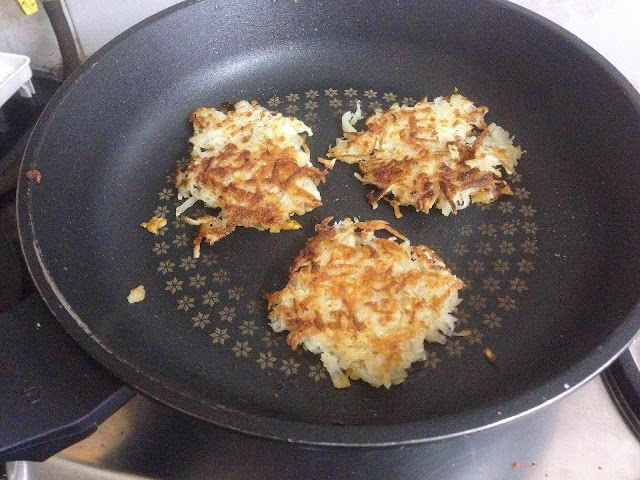I am on a cook at home spree. So whatever I crave for, I make at home. It's a great idea for me to try cooking new things and learn more cooking.
My latest cravings were that of a chicken burger. A juicy minced chicken patty, some lovely spread between crispy lettuce and soft buns. Well, I thought if I've imagined so much, I might as well make it!
This burger combines the recipes of many burger specials I've seen on TV and online. The ideas which have appealed to me, I've taken them. I've come up with this recipe for my juicy chicken burger. All the ingredients are easily available to an Indian kitchen, so there are no worries there!
Chicken Burger Recipe
Preparation Time: 10 minutes
Making Time: 30 minutes
Makes: 4 burgers
Ingredients:
For the burger patties:
500 gms minced chicken
2 cups bread crumbs
1 tbsp mustard sauce
1 tbsp tomato ketchup
1 tbsp mixed herbs (oregano, basil, rosemary, thyme and parsley)
1 tbsp garlic powder
Oil to shallow fry
Salt to taste
For the burger spread:
4 tbsps mayonnaise
2 tbsps mustard sauce
For Serving:
4 burger buns
4 leaves of lettuce
1 medium tomato sliced
Method:
First take the chicken mince in a bowl. Add in the mustard, ketchup, garlic powder, salt and herbs.
Next, add in the bread crumbs and mix with very light hands. Using a lot of pressure with make the burgers dry.
Make 4 patties of this mixture and refrigerate for 20 minutes at least.
In a bowl mix together the mayonnaise and mustard sauce to make a yummy burger spread.
In a bowl take some ice water. Dip the lettuce leaves in it and keep for at least 15 minutes. Pat dry.
Heat oil in a flat pan till it becomes very hot. Lower the flame to a medium high and cook the chicken patties for 5 minutes on each side.
In the meanwhile cut the burger buns, spread the burger spread on it and put the lettuce and tomato slices on the lower half of the bread.
When the patty is done, put it on top of the tomato slice and serve!
You can also serve the lettuce and tomato on the side to prevent the burger from soggy.
 |
| Chicken Burger Recipe |
My latest cravings were that of a chicken burger. A juicy minced chicken patty, some lovely spread between crispy lettuce and soft buns. Well, I thought if I've imagined so much, I might as well make it!
 |
| Chicken Burger Recipe |
This burger combines the recipes of many burger specials I've seen on TV and online. The ideas which have appealed to me, I've taken them. I've come up with this recipe for my juicy chicken burger. All the ingredients are easily available to an Indian kitchen, so there are no worries there!
 |
| Chicken Burger Recipe |
Chicken Burger Recipe
Preparation Time: 10 minutes
Making Time: 30 minutes
Makes: 4 burgers
Ingredients:
For the burger patties:
500 gms minced chicken
2 cups bread crumbs
1 tbsp mustard sauce
1 tbsp tomato ketchup
1 tbsp mixed herbs (oregano, basil, rosemary, thyme and parsley)
1 tbsp garlic powder
Oil to shallow fry
Salt to taste
For the burger spread:
4 tbsps mayonnaise
2 tbsps mustard sauce
For Serving:
4 burger buns
4 leaves of lettuce
1 medium tomato sliced
Method:
First take the chicken mince in a bowl. Add in the mustard, ketchup, garlic powder, salt and herbs.
Next, add in the bread crumbs and mix with very light hands. Using a lot of pressure with make the burgers dry.
Make 4 patties of this mixture and refrigerate for 20 minutes at least.
In a bowl mix together the mayonnaise and mustard sauce to make a yummy burger spread.
In a bowl take some ice water. Dip the lettuce leaves in it and keep for at least 15 minutes. Pat dry.
Heat oil in a flat pan till it becomes very hot. Lower the flame to a medium high and cook the chicken patties for 5 minutes on each side.
In the meanwhile cut the burger buns, spread the burger spread on it and put the lettuce and tomato slices on the lower half of the bread.
When the patty is done, put it on top of the tomato slice and serve!
You can also serve the lettuce and tomato on the side to prevent the burger from soggy.



































